Key takeaways:
- Linux is an open-source operating system known for its flexibility, security, and community support, allowing users to customize it for their needs.
- Online safety requires ongoing education, with an emphasis on recognizing phishing attempts, using strong passwords, and communicating about digital experiences as a family.
- Configuring user permissions and installing security software like firewalls and antivirus are essential steps for maintaining security on Linux systems.
- Regular tech check-ins and updates on software are crucial practices for safeguarding a family’s online presence and fostering responsible internet habits.
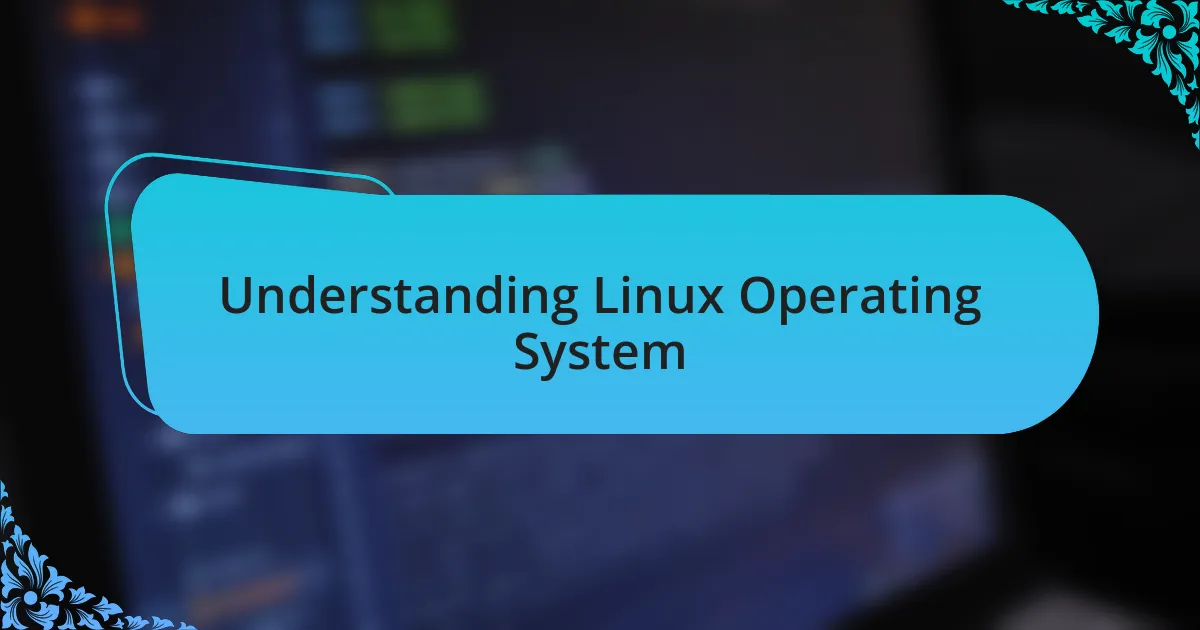
Understanding Linux Operating System
Linux is an open-source operating system, which means that anyone can modify and distribute it. I remember the first time I tried to install it on my old laptop; there was a sense of excitement mixed with anxiety. Would it really breathe new life into that machine? It did, and I discovered a vibrant community of users who were just as eager to share knowledge and support each other.
What really sets Linux apart is its flexibility. You can customize it to suit your needs, which is something I truly appreciate. For instance, when my kids started learning programming, I installed a lightweight version of Linux tailored for beginners. That experience made me realize how empowering it is for them to have a hands-on tool that inspires curiosity and creativity.
Furthermore, Linux is known for its security, which is something every family should consider. Each layer of security helps to keep your data safe, and it’s comforting to know that my family’s online activities are secure. Whether it’s browsing the web or sharing files, Linux offers peace of mind that I find invaluable. Have you ever wondered how a community-driven model like Linux can result in such robust software? It’s a testament to the power of collaboration and shared knowledge.
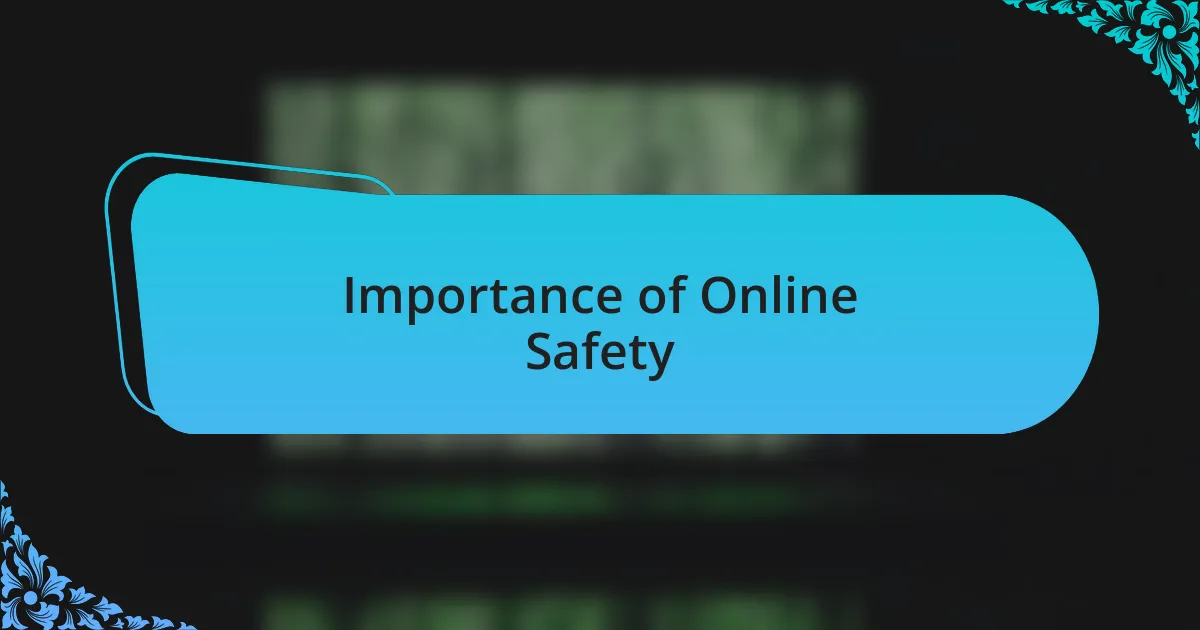
Importance of Online Safety
Online safety is essential because the internet, while a treasure trove of knowledge and connection, is also fraught with risks. I remember a time when my child accidentally clicked on a suspicious link, leading us down a rabbit hole of unwanted pop-ups and potential malware. It was a wake-up call, highlighting just how critical it is to be vigilant about what we encounter online.
Every day, malicious entities are looking for vulnerable targets. That’s why I’ve made it a priority to educate my family on recognizing phishing attempts and understanding the importance of secure passwords. I often ask them, “What would you do if you received an unexpected message from someone you know?” This simple question has sparked enlightening discussions about trust and verification in our digital communications.
Moreover, fostering safe online habits from an early age not only protects my family but also empowers them to explore the internet responsibly. When my teenagers began using social media, I encouraged them to think critically about the information they shared. Creating an environment where they feel comfortable discussing their online experiences has been invaluable. It reinforces that online safety is a shared responsibility, and together, we can navigate the digital landscape with confidence.
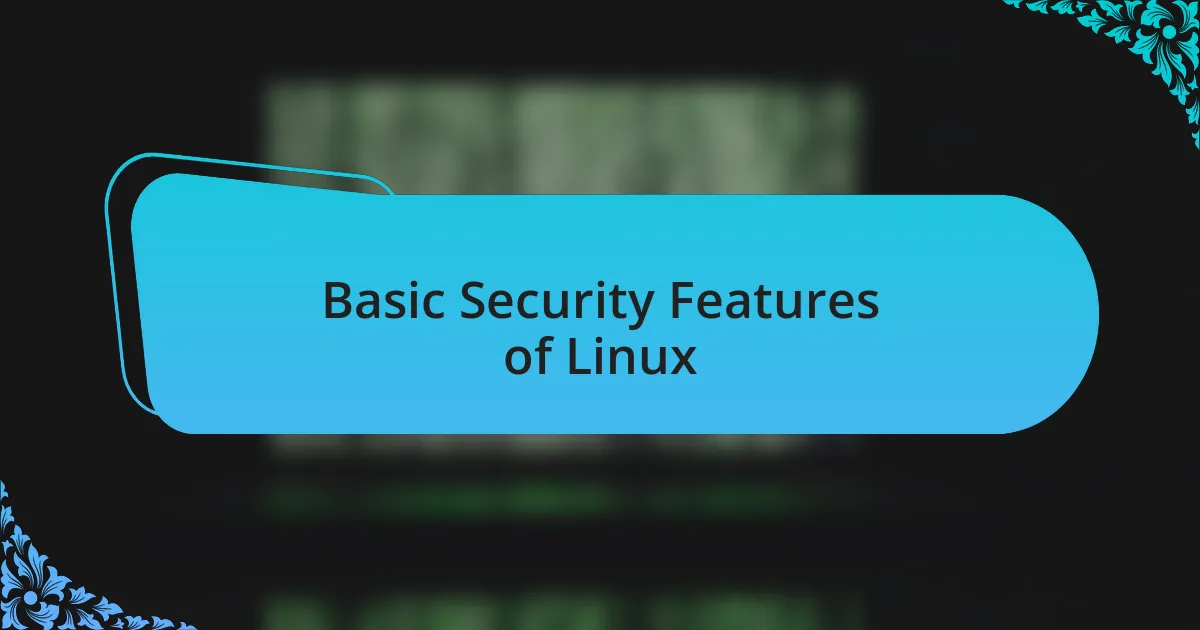
Basic Security Features of Linux
When it comes to Linux, one of its standout features is the robust user permissions system. Each user has specific permissions for files and directories, which means that even if malware gets in, it often won’t have the same level of access to my system. I remember setting up a new Linux machine for my family and realizing that simply creating separate user accounts provided an additional layer of security, making me feel much more at ease about their online interactions.
Another great example is the variety of built-in firewalls available in Linux distributions, such as iptables. I’ve configured it not just to block unwanted incoming traffic but also to monitor outgoing connections. This proactive approach has given me peace of mind, knowing that I can catch potential threats before they escalate. Have you ever felt the relief of knowing your defenses are in place before you tackle the challenges of the online world?
Additionally, regular updates and patch management are integral to maintaining security in Linux. My routine includes checking for updates at least once a week, which feels like a safety net. When I think about the peace of mind it brings me, I can’t help but wonder—how often do we overlook the importance of simply keeping our systems up to date? It’s a small effort that can have a significant impact on our overall safety online.

Configuring User Permissions in Linux
Configuring user permissions in Linux is essential for protecting your family’s online presence. I once had a family member accidentally click on a suspicious link, and I was relieved that their account had limited permissions. This meant that even if malware attempted to access files, it was restricted from critical system areas, which gave me a sense of security that I truly appreciated.
When setting permissions, I like to use the command line tool chmod, which allows me to easily adjust file permissions. For instance, I remember configuring a shared folder for family photos; I set it so that only my wife and I could edit it while the kids had read-only access. It sparked a conversation about trust and responsibility among us, emphasizing how important it is to be mindful of our digital interactions.
I also take time to explain to my family the significance of these settings. I often ask them, “Would you leave your front door wide open?” The analogy resonates with them, reinforcing the importance of applying the principle of least privilege online. Creating tailored access not only protects our data but also helps everyone understand their role in maintaining our family’s online safety.

Installing Security Software on Linux
Installing security software on Linux is a crucial step in safeguarding my family’s online experience. When I first dived into Linux, I felt a bit overwhelmed by the sheer number of options available. However, I found that installing tools like ClamAV provided me with peace of mind. The setup was straightforward, and seeing it run regular scans gave me a sense of control.
One of my favorite aspects of Linux security software is the ability to customize its functionality. For example, I recently configured a firewall using UFW (Uncomplicated Firewall). This process involved simple commands, and I was astonished at how swiftly I could tailor network access. I still remember the relief I felt knowing that unnecessary ports were closed, which minimized the chances of intrusions.
Beyond installation, I engage my family in discussions about security software’s benefits. I often say, “Think of it as an additional security guard for our digital life.” Giving them this visual helps them grasp the importance of these tools. By ensuring they understand what the software does, they feel more invested in keeping our family safe online, turning it into a collective responsibility rather than just mine.
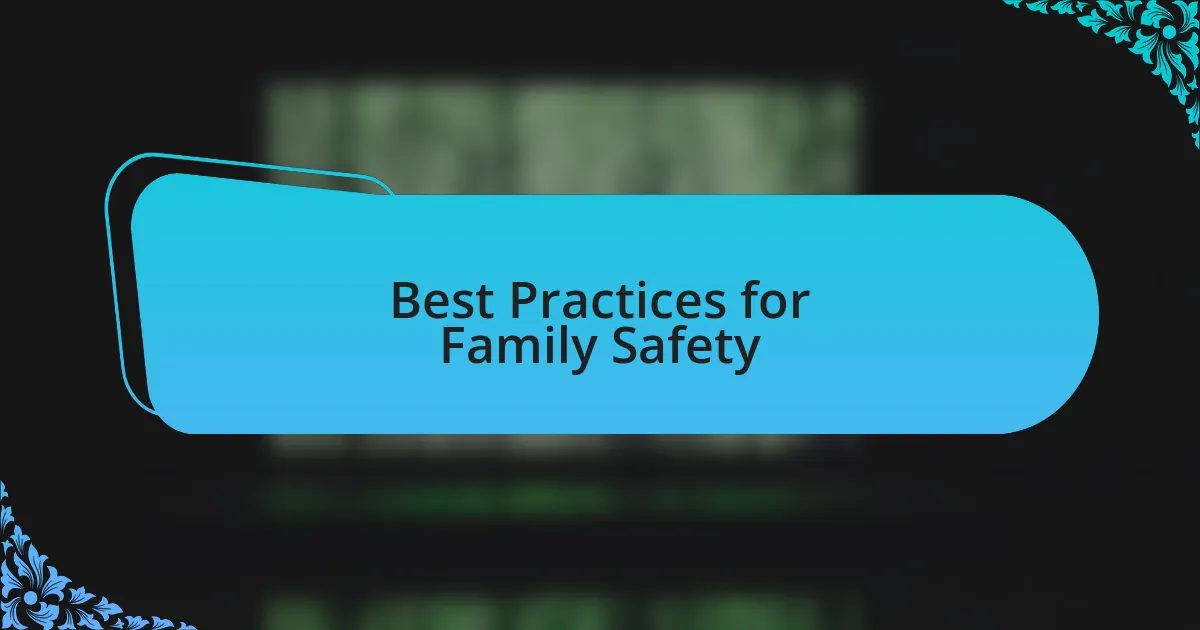
Best Practices for Family Safety
Ensuring my family’s online safety begins with setting clear internet usage rules. I remember when my kids first started exploring the web; it was essential to create guidelines on what sites they could visit and how long they could spend online. By framing these rules as “house rules” for the internet, it helped them understand that just like in real life, there are boundaries that keep them safe.
I also encourage using strong, unique passwords for different accounts. One time, I had a friend who experienced a breach because they used the same password everywhere. Learning from that experience, I now use a password manager to generate and store complex passwords securely. It’s an extra layer of protection that allows my family to focus on their online activities without worrying about password fatigue or vulnerability.
Regularly discussing online safety with my family keeps the conversation dynamic and engaging. Just last week, we had a chat about the importance of identifying phishing emails. I shared a story about a close call I had when I almost clicked on a malicious link. It sparked a great discussion, and I realized that by being open about my experiences, I could teach them to recognize potential threats and respond more effectively. This ongoing dialogue fosters a culture of awareness and encourages everyone to look out for one another online.
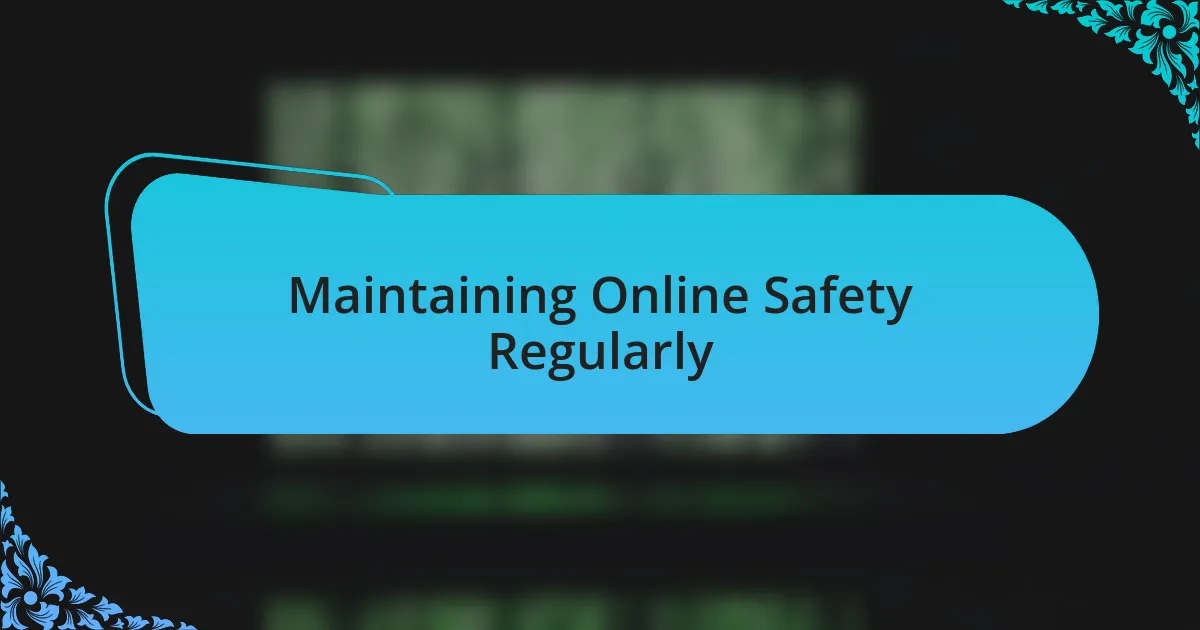
Maintaining Online Safety Regularly
Maintaining online safety isn’t a one-time effort; it’s a continuous practice. I’ve found that scheduling regular “tech check-ins” with my family can be incredibly beneficial. During these sessions, we review recent online experiences and any new apps or platforms they want to explore. This approach not only helps me stay informed but also allows my kids to feel comfortable sharing their online encounters, whether they’re exciting or concerning.
One of the most effective strategies I’ve implemented is updating software and security settings across our devices every month. I often remind myself and my family that even a simple phone app can become a doorway for threats if it’s not up to date. In fact, I remember the sense of relief I felt when I discovered a potential vulnerability in an app my child used; we quickly patched it up together, turning a potential scare into a shared learning moment.
My family knows that online safety isn’t just about the technology; it’s about habits. I’ve encouraged them to think critically about the information they share online. I often ask, “Would you share this with a stranger in real life?” It roots the concept of personal information security in a familiar context. By framing our discussions this way, I’ve noticed they start to instinctively question what they post and engage more responsibly with their digital presence.